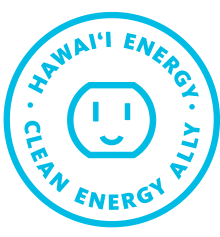I got a call, so I did what I always do. I tested the house and collected some data. The testing is important – no matter how well we think we know our houses, they can surprise us. Without testing, it’d be like looking at someone and guessing if they have high blood pressure. Sometimes it’s obvious, but mostly it isn’t. I play small games with myself and try to guess how a house will behave before I test it. I usually lose.

The blower door helps figure out why a house has a problem. In this case we found consistently high humidity levels, coupled with a tight building envelope. Because of the design of the house, it couldn’t ventilate the moisture away at all.

The building tightness was actually helpful; if the house were built today, it would be 25% better than Hawaii’s Energy Code minimum for airtightness. That meant that the environment could be more controlled, and a ducted dehumidifier would work.



This house doesn’t have air conditioning, so it doesn’t have a duct system either. That can be an advantage, because a dedicated purpose-built duct system can be right-sized to match the unit. As it’s built, its joints are sealed and while you’re at it, it’d be a good time to air seal the house too. That helps keep the drier air from escaping as quickly.




Once the unit is installed, and everything’s attached, it’s tempting to think that it’ll work. Why wouldn’t it? There are lots of potential reasons:
- faulty equipment
- shipping damage (the unit came from Wisconsin)
- missed ductwork connections
- install errors
- control wiring mistakes
- house alterations
- etc.
So many things can go wrong that “commissioning” a system is crucial. As part of a startup procedure, I take measurements. I re-do the blower door test, because in this case seven large holes were cut in the building envelope and that could make the house leakier, which isn’t helpful. It’s good to make sure all the new holes are sealed as best as possible. I also measure the pressure in the ductwork, because in the instructions for the dehumidifier there’s a table that tells you how the unit’s performing.


But if you really want to make sure it’s working, and not just hope it’s working, you need a good amount of data. I left my data logger behind to see what happened, and we learned a useful thing: in 18 hours, it’s possible to reduce the humidity in the house by 20 percentage points.

Did I mention that this house is off-grid? I got a call from the homeowner that the battery bank was drained and the generator didn’t kick on. Here’s the same graph as above, just for a slightly longer time period. You can see the humidity climb (when we experienced the power interruption), how quickly it climbed, and how quickly the unit drew the humidity level back down when the power came back on.

That was a good thing to learn – the generator was offline! It had never been an issue before, but because an ‘ohana will be added, it became clear that more solar generation will be needed.
Mold needs certain conditions to grow, and one of them is a moist environment. You could kill the mold, but if you don’t change the conditions it’ll just come back. A drier (but not too dry) home is healthier. If you’re tired of moldy closets, or your child sneezes a lot, or your furniture is moving, get in touch. We’ll figure out what will work for you.
The data will tell us.
Previous blogs:
You Need a Bigly Dehumidifier part 1
You Need a Bigly Dehumidifier part 2
Staying Dry on Waimea’s Wet Side
“Before” pictures:








